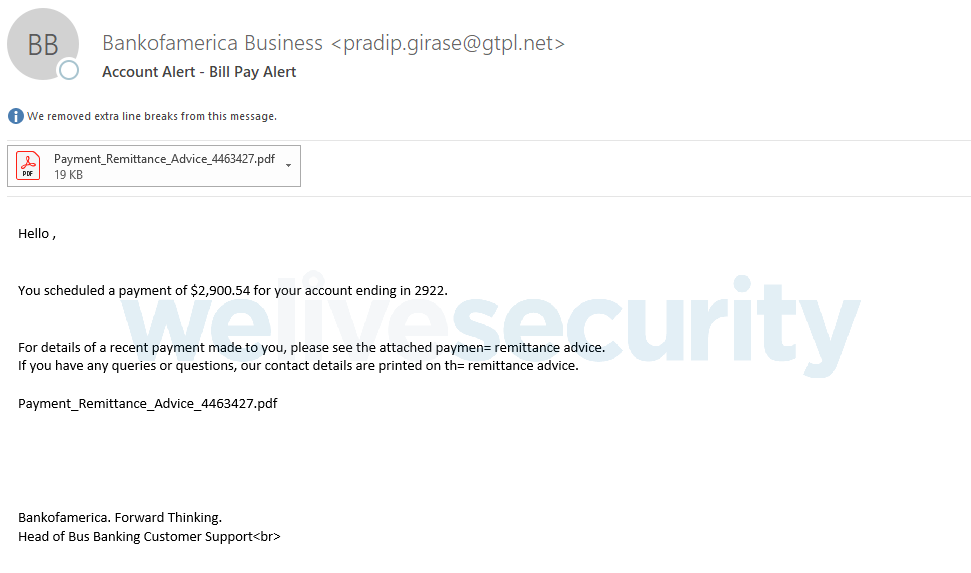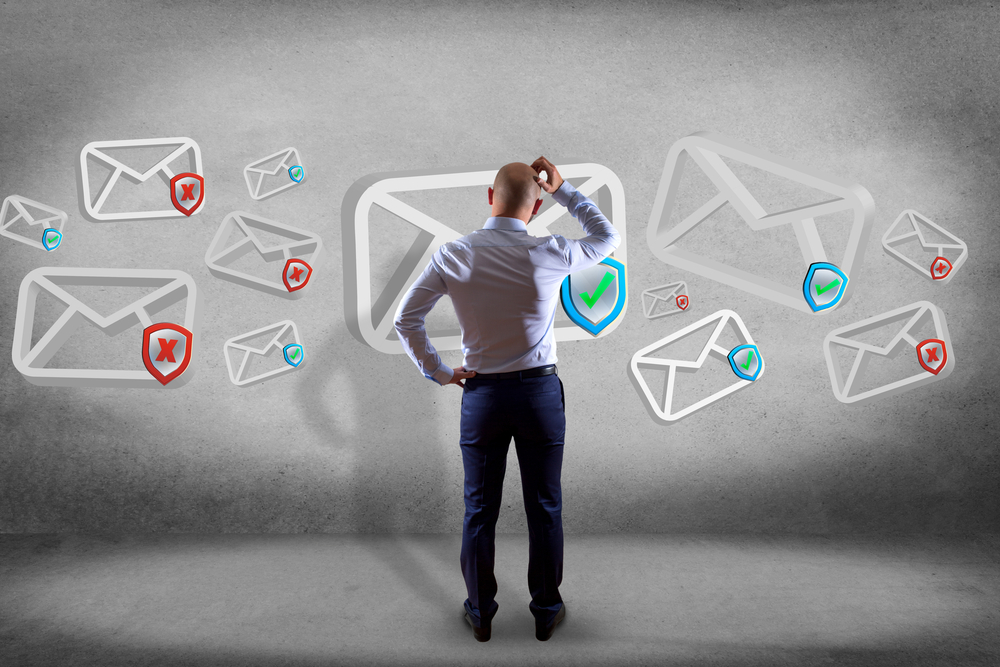A week after adding a new email content harvesting module, and following a period of low activity, the malicious actors behind Emotet have launched a new, large-scale spam campaign.
What is Emotet?
Emotet is a banking Trojan family notorious for its modular architecture, persistence techniques, and worm-like self-propagation. It is distributed through spam campaigns employing a variety of seemingly legitimate guises for their malicious attachments. The Trojan is often used as a downloader or dropper for potentially more-damaging, secondary payloads. Due to its high destructive potential, Emotet was the subject of a US-CERT security notice in July 2018.
The new campaign
According to our telemetry, the latest Emotet activity was launched on November 5, 2018, following a period of low activity. Figure 1 shows a spike in the Emotet detection rate in the beginning of November 2018, as seen in our telemetry data.

Figure 1 - Overview of ESET product detections of Emotet in the past two weeks
Breaking those detections down by country, as seen in Figure 2, this latest Emotet campaign appears to be most active the Americas, the UK, Turkey and South Africa.

Figure 2 – Distribution of ESET detections of Emotet in November 2018 (including both file and network detections)
In the November 2018 campaign, Emotet makes use of malicious Word and PDF attachments posing as invoices, payment notifications, bank account alerts, etc., seemingly coming from legitimate organizations. Alternately, the emails contain malicious links instead of attachments. The email subjects used in the campaign suggest a targeting of English and German-speaking users. Figure 3 shows Emotet activity in November 2018 from the perspective of document detections. Figures 4, 5 and 6 are example emails and attachments from this campaign.

Figure 3 - Distribution of ESET detections of Emotet-related documents in November 2018

Figure 4 - Example of a spam email used in the latest Emotet campaign

Figure 5 - Example of a malicious Word document used in the latest Emotet campaign

Figure 6 - Example of a malicious PDF used in the latest Emotet campaign
The compromise scenario in this November 2018 campaign starts with the victim opening a malicious Word or PDF file attached to a spam email seemingly coming from a legitimate and familiar organization.
Following the instructions in the document, the victim enables macros in Word or clicks on the link in the PDF. The Emotet payload is subsequently installed and launched, establishes persistence on the computer and reports the successful compromise to its C&C server. In turn, it receives instructions on which attack modules and secondary payloads to download.
The modules extend the initial payload’s functionality with one or more of credential-stealing, network propagation, sensitive information harvesting, port forwarding, and other capabilities. As for the secondary payloads, this campaign has seen Emotet dropping TrickBot and IcedId on compromised machines.
Conclusion
This recent spike in Emotet activity just goes to show that Emotet continues to be an active threat – and an increasingly worrying one due to the recent module updates. ESET systems detect and block all Emotet components under detection names listed in the IoCs section.
Indicators of Compromise (IoCs)
Example hashes
Note that new builds of Emotet binaries are released approximately every two hours, so hashes may not be the latest available.
Emotet
| SHA-1 | ESET detection name |
|---|---|
| 51AAA2F3D967E80F4C0D8A86D39BF16FED626AEF | Win32/Kryptik.GMLY trojan |
| EA51627AF1F08D231D7939DC4BA0963ED4C6025F | Win32/Kryptik.GMLY trojan |
| 3438C75C989E83F23AFE6B19EF7BEF0F46A007CF | Win32/Kryptik.GJXG trojan |
| 00D5682C1A67DA31929E80F57CA26660FDEEF0AF | Win32/Kryptik.GMLC trojan |
Modules
| SHA-1 | ESET detection name |
|---|---|
| 0E853B468E6CE173839C76796F140FB42555F46B | Win32/Kryptik.GMFS trojan |
| 191DD70BBFF84D600142BA32C511D5B76BF7E351 | Win32/Emotet.AW trojan |
| BACF1A0AD9EA9843105052A87BFA03E0548D2CDD | Win32/Kryptik.GMFS trojan |
| A560E7FF75DC25C853BB6BB286D8353FE575E8ED | Win32/Kryptik.GMFS trojan |
| 12150DEE07E7401E0707ABC13DB0E74914699AB4 | Win32/Kryptik.GMFS trojan |
| E711010E087885001B6755FF5E4DF1E4B9B46508 | Win32/Agent.TFO trojan |
Secondary payloads
TrickBot
| SHA-1 | ESET detection name |
|---|---|
| B84BDB8F039B0AD9AE07E1632F72A6A5E86F37A1 | Win32/Kryptik.GMKM trojan |
| 9E111A643BACA9E2D654EEF9868D1F5A3F9AF767 | Win32/Kryptik.GMKM trojan |
IcedId
| SHA-1 | ESET detection name |
|---|---|
| 0618F522A7F4FE9E7FADCD4FBBECF36E045E22E3 | Win32/Kryptik.GMLM trojan |
C&C servers (active as of November 9, 2018)
| 187.163.174[.]149:8080 |
|---|
| 70.60.50[.]60:8080 |
| 207.255.59[.]231:443 |
| 50.21.147[.]8:8090 |
| 118.69.186[.]155:8080 |
| 216.176.21[.]143:80 |
| 5.32.65[.]50:8080 |
| 96.246.206[.]16:80 |
| 187.163.49[.]123:8090 |
| 187.207.72[.]201:443 |
| 210.2.86[.]72:8080 |
| 37.120.175[.]15:80 |
| 77.44.98[.]67:8080 |
| 49.212.135[.]76:443 |
| 216.251.1[.]1:80 |
| 189.130.50[.]85:80 |
| 159.65.76[.]245:443 |
| 192.155.90[.]90:7080 |
| 210.2.86[.]94:8080 |
| 198.199.185[.]25:443 |
| 23.254.203[.]51:8080 |
| 67.237.41[.]34:8443 |
| 148.69.94[.]166:50000 |
| 107.10.139[.]119:443 |
| 186.15.60[.]167:443 |
| 133.242.208[.]183:8080 |
| 181.229.155[.]11:80 |
| 69.198.17[.]20:8080 |
| 5.9.128[.]163:8080 |
| 104.5.49[.]54:8443 |
| 139.59.242[.]76:8080 |
| 181.27.126[.]228:990 |
| 165.227.213[.]173:8080 |





